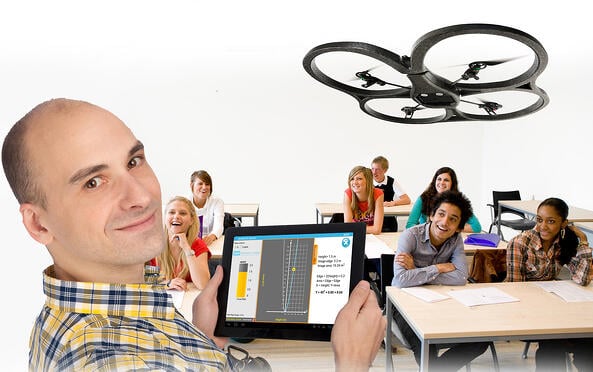
There is plenty of educational technology out there waiting for educators and teachers to use in their schools. And RobotsLAB provides some of the best with its engaging BOX, MathBALL, MAKERBOT 3D printers and anthropomorphic robots like NAO, BIOLOID and DARwin OP. But according to many educators, much as they would like to see more edtech, getting their school systems to accept it is not an easy matter.
Lack of money is one of the first problems that teachers say they run into when they try to upgrade classroom technology. They have a point: some technology, like providing every student with a tablet, costs a financially challenged school district many hundreds of thousands of dollars. But providing every student with a new gadget isn’t the only way to get edtech into schools. Believe it or not there is a lot of free stuff out there that can engage an entire class with only a nominal original outlay.
Scratch, the programming language for example, can teach kids about coding using the computers most (I would hope all) school districts already have. With a single low-priced 3-D printer in the classroom (MAKERBOT 3D printer sells for less than two grand) teachers have a tool that will bring kids into contact with the new manufacturing technology considered by many, including President Obama, as the new revolution in technology. With the 3D printer in hand, teachers can turn to such online repositories as Thingiverse for thousands of free, interesting and engaging 3D templates. For more free edtech ideas try Googling the phrase free edtech. If your school district is having trouble coming up with even the nominal costs like a few 3D printers or a RobotsLAB BOX or two, consider government or private grants. You’ll be amazed at the number of grants available for educational technology if you Google the phrase educational technology grants.
Of course lack of funds is not the only impediment to getting new educational technology into schools. Schools, like all institutions, struggle with change. Educator and edtech blogger Dr. Justin Tarte has what he calls 10 tips for starting a technology revolution that might prove useful for those of you out there who are determined to upgrade the level of tech in your schools.
1 - Make sure the administration is on board…
2 - Lay the groundwork and foundation by asking simple questions… (find out what what level your colleagues are in this revolution you hope to start)
3 - Some educators will be advanced...but most will not be - GO SLOW…
4 - Do not drown your fellow educators with too much too soon…
5 - Support and encourage your shining stars…
6 - Use the largest, loudest, and most listened to group in the school - the students…
7 - Get constant feedback from your colleagues…
8 - Offer your time to help others (off the clock)...
9 - Help make technology and social media applicable to their class / content area...
10 - When you get discouraged, don't - the revolution will be long and hard…
http://www.justintarte.com/2010/12/10-tips-for-starting-technology.html

